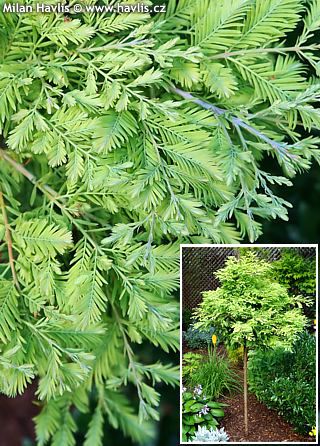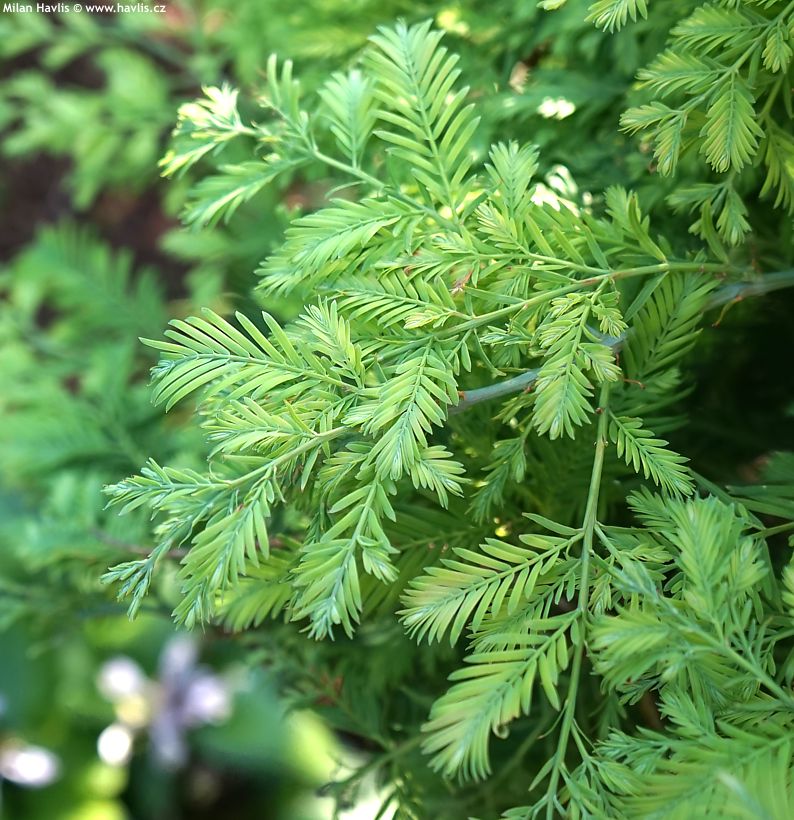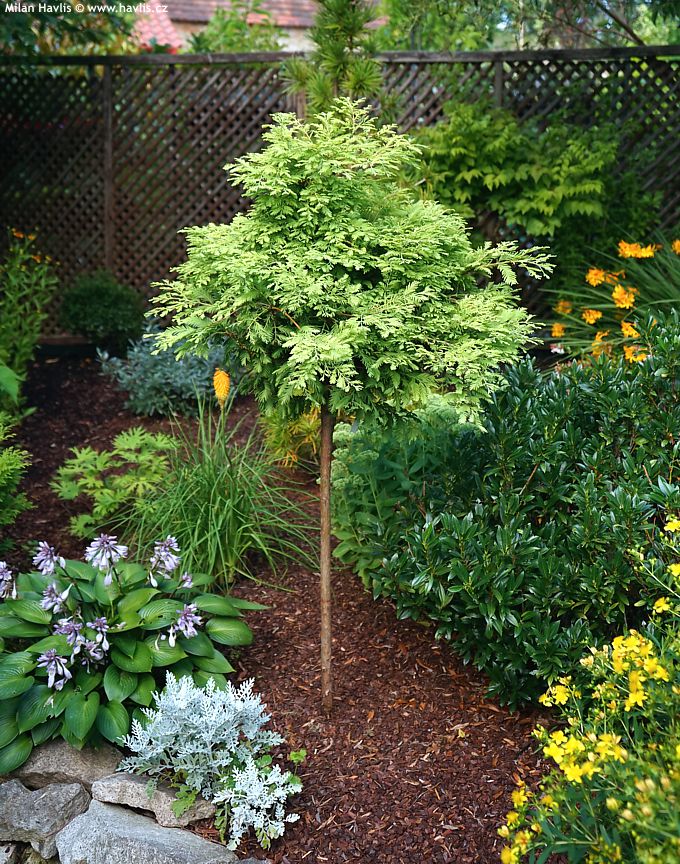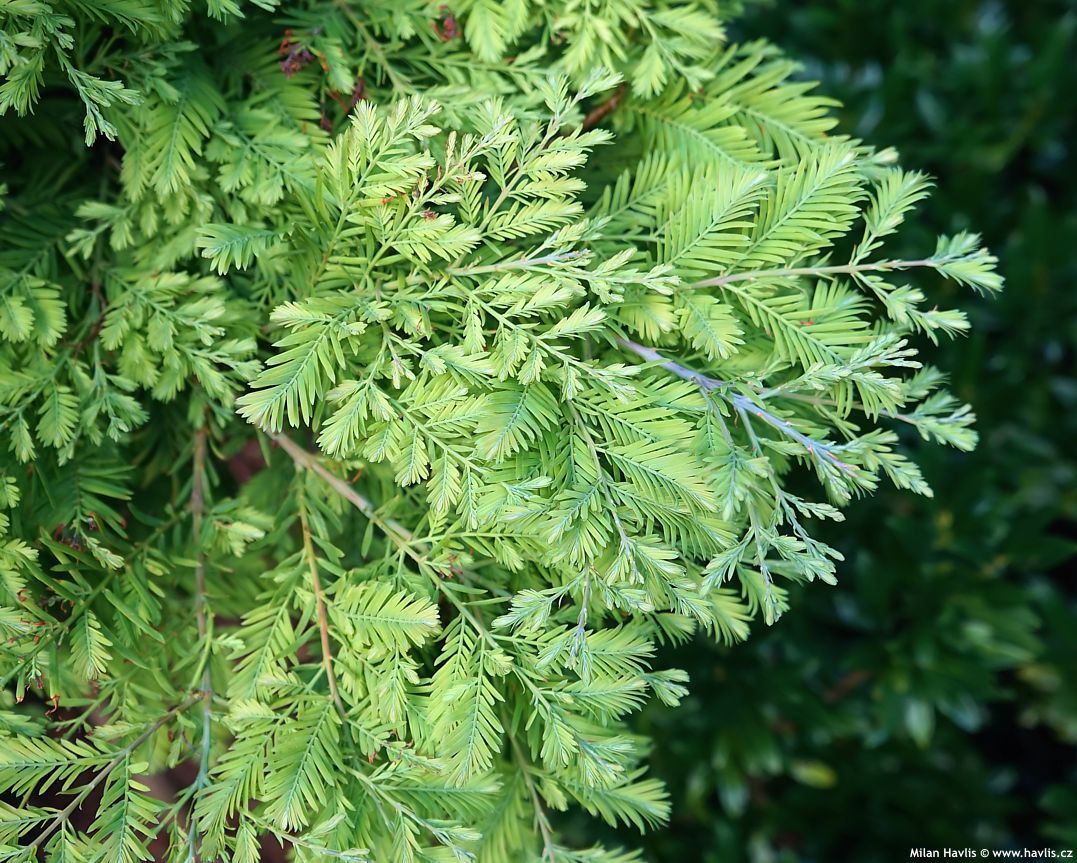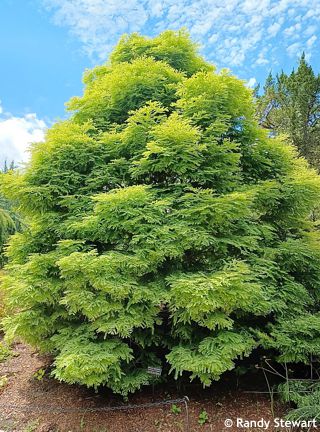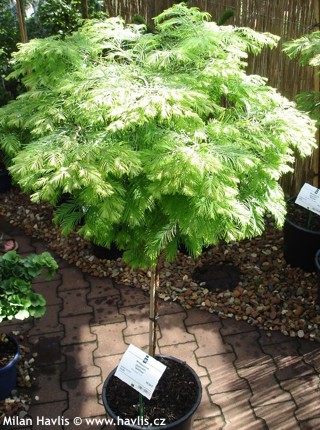Metasequoia glyptostroboides 'HAMLET'S BROOM' dawn redwood
size/type
medium-sized shrub,small tree
usual height
1-2m
usual width
1-1,5m
leaves
deciduous conifer
colour of leaves
location
full sun
soil type
any (acidic to alkaline)
soil moisture requirements
tolerates (but does not demand) wet ground
USDA zone (lowest)
4 (down to -34°C)
winter protection
for zone 5+6

for zone 7

categorized
Metasequoia
There’s a horticultural legend from the mid-1940s that goes something like this: For centuries, metasequoia had been believed to be extinct in the wild and buried only in fossils just like trilobites. It wasn't until 1941 that a live specimen was found in China, which was immediately subjected to botanical research, enthusiastically propagated, and subsequently introduced to the world as newly resurrected creatures of our prehistorical past. Who wouldn't want a tree from the dinosaur’s era in their own yard! However. I bet you know what it’s like when it comes to legends – every talking head adds something to it. By the year 2000 the story got so muddled, with so many people feasting on it, not only those from the media, but also those from academic circles who wanted to elevate their own prestige, that botanist Jinshuang Ma of the Brooklyn Botanic Garden decided to trace the true footsteps. In 2002 and consequently in 2003 he published two papers on the subject where he explained the following:In 1943, the Chinese botanist Zhan Wang collected the first seeds and a few branches from a single specimen he found. Unaware of their importance and of the fact that he had mistaken named the plant as Glyptostrobus pensilis, he sent them to Nanjing University's Professor W.C. Cheng. There, they identified his mistake and, amazed by his discovery, in the spring of 1946, they sent one of their students C.T. Hwa to examine the site in the so-called Metasequoia Valley to collect more seeds. Plenty more seeds, I have to say; he collected several kilograms (!) of them and when we consider that he had to walk on foot a large part of the journey, his merits are directly proportional to the weight of his backpack. Upon his return, the seeds were distributed from the university to 76 addresses around the world – from botanical gardens and schools to private collectors. The combination of the plant and its legend kicked off a horticultural sensation and huge media interest and caused a lot of speculations and academic disputes among experts.
The post-war cooling down of relations between communist China and the capitalist West ended almost all exchange for some 30 years, including botanical exchange. Hence no more seeds from China. Luckily, many growers in other countries, having had to do with what they had, naturally tried vegetative propagation, too. They were delighted to discover how easily metasequoia was propagated by cuttings, and moreover that it was resistant to almost all diseases and pests. Thanks to them, this tree is now readily available in every good nursery, and, thanks to the plant’s variability, there are quite a few attractive varieties (29 registered to date) suitable even for smaller gardens.
Description of the plant:
Hamlet’s Broom is a beautiful witches broom of dawn redwood of compact to dwarf growth. It was found in Denmark and given a variety name around 2005. It produces soft, flat, deciduous needles that are bright green with slightly yellow hues in spring, mature to medium in early summer, and turn amber to rusty orange in autumn before they fall off. The habit is very dense, tiered, dense and pyramidal. The trunk is red-brown and conspicuously fibrous or flaking off, which you will appreciate especially in winter.Hamlet's Broom dawn redwood grows slowly, only about 5-10 cm per year, and branches out nicely, no pruning is needed to encourage a denser habit. Still, it can be shaped or kept smaller, preferably at the end of winter. It is grown either as a small shrub in large rockeries and borders with dwarf conifers and other witches brooms, or grafted onto a short standard forming an elegant, small tree with a lush green canopy adding softness to any composition.
Dawn redwood is closely related to bald cypress (taxodium distichum) and requires very similar conditions: humus-rich, deep, moist soil, some sources even recommend boggy soil. We have been growing it here in partly water-logged location and it has been doing great. Grow it in full sun only. Pruning is possible in spring in order to maintain smaller size or to achieve a denser habit especially in young trees. But avoid over-pruning – do not prune more than 30% of the canopy to prevent stressing the tree. It is fully hardy to min. -34 °C (USDA zone 4).
Last update 02-04-2023
QUICK PRICE OVERVIEW
CURRENTLY SOLD OUT
WANT TO TRY A SIMILAR PLANT?












